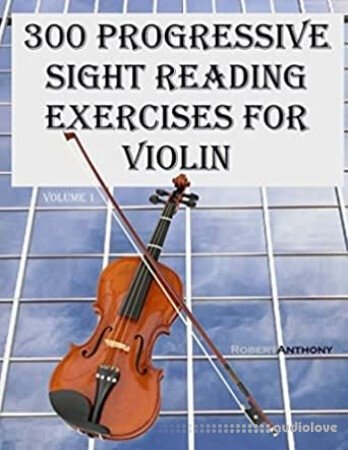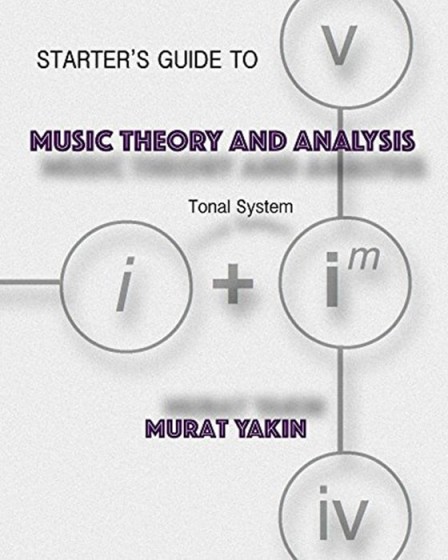300 Progressive Sight Reading Exercises for Piano

English | 2015 | ISBN: 1507759916 | 166 pages | EPUB | 10 MB
First and foremost: THIS IS NOT A METHOD BOOK. It is precisely what it says it is: 300 Progressive Sight Reading Exercises!
All of the exercises are eight measures long. If one has done any study of formal analysis, they will find that eight measures is a typical "period' of music and usually contains two, four-bar phrases (also typical in length). For example, many sonatinas, jazz standards, and pop songs use "32 Bar Form" (A A B A), "Binary Form" (A B), and "Ternary Form" (A B A), with each section often being eight bars. Thus, eight measures (one period of music) makes the perfect length for sight-reading studies, in my opinion.
Various strategies to using this book may be implemented. With my students, I start toward the beginning and zig-zag through the book, skipping the appropriate number of pages to make it into the more challenging sections. The further they are in the book, the more we skip. This approach prevents the student from memorizing the exercises, allowing for them to remain useful.
"These books differ from conventional "methods' in that technical and theoretical instructions have been omitted, in the belief that these are more appropriately left for the teacher to explain to the student." - Bela Bartok, Mikrokosmos.
I whole-heartedly agree with Bartok's sentiment and if music teachers would ask their students what they like least (or hate the most) about typical lessons, it is the method books that win this contest EVERY TIME. I have completely eliminated method books from my own teaching practice and have much happier and more productive students than ever.
While this book is intended to train sight-reading skills, it may also be used by beginners or those new to reading to acquire basic reading skills, but it assumes one either has a teacher or can at least find C on their instrument. It starts at a very basic level (only three notes) and adds a new note, rhythm, or concept every four exercises and thoroughly reinforces them throughout the rest of the book.
Next, the music's composition is a slave to its function: The purpose of the books is to train reading skill, and the exercises keep challenging the range that has been established by previous exercises as well as less-than-convenient intervalic skips. They are composed from a "music-first' perspective, as opposed to an "instrument-first' perspective, and are purposely composed to be difficult to memorize.
For example, the first exercises begin on C because they are in the key of C, and then go on to sometimes start and end on different scale degrees of the same key. Those familiar with the Fundamental Modes will likely recognize what they are hearing, but those unfamiliar with these modes will likely be hearing something that sounds a bit different, or odd, until their ears acclimate to these sounds. I see many students go through this process with altered dominants and augmented triads as well.
home page:
https://amzn.to/2Ov38qD
DOWNLOAD
Related News:
 300 Progressive Sight Reading Exercises for Violin
300 Progressive Sight Reading Exercises for ViolinEnglish | 2015 | ISBN: 1505886988 | 90 pages | Rar (PDF, AZW3) | 17 MB First and foremost: THIS IS NOT A METHOD BOOK. It is precisely what it says it is: 300 Progressive Sight Reading Exercises! Volume is comprised of 300 progressive eight-bar exercises that cover the keys of C Major, F Major, G Major, A Minor, D Minor and E Minor. Time signatures include 4/4 (Common Time), 3/4, 2/4, 6/8, and 2/2...
 The Only Basic Piano Instruction Book You'll Ever Need
The Only Basic Piano Instruction Book You'll Ever NeedEnglish | ISBN: 1593373805 | 2006 | 160 pages | EPUB, MOBI | 3 MB Lots of piano books offer either in-depth analysis or quick gimmicks that don't really teach music theory. But The Only Basic Piano Instruction Book You'll Ever Need is different. For students who want to learn the basics and dive right into playing, this book skips all the unnecessary trivia on the history of pianos and avoids...
 The Craft of Musical Composition : Book 2: Exercises in Two-Part Writing
The Craft of Musical Composition : Book 2: Exercises in Two-Part WritingEnglish | 2020 | ISBN-13 : 978-0901938411 | 169 Pages | True PDF | 16 MB Originally published in the 1940s, Paul Hindemith's remarkable textbooks are still the outstanding works of their kind. In contrast to many musical textbooks written by academic musicians, these were produced by a man who could play every instrument of the orchestra, could compose a satisfying piece for almost every kind of...
 Starter's Guide to Music Theory and Analysis: Tonal System
Starter's Guide to Music Theory and Analysis: Tonal SystemEnglish | 2016 | ISBN: 1534975918 | 258 Pages | PDF (True) | 134 MB This is a step by step guide for music theory and analysis for the beginners. From basics of musical notation to the principles of tonality, all of the difficult subjects of music theory are explained in detail, with demonstrations. The student is prepared for analysis studies step by step. The exercises provided at the end of...
Comments for 300 Progressive Sight Reading Exercises for Piano:
No comments yet, add a comment!